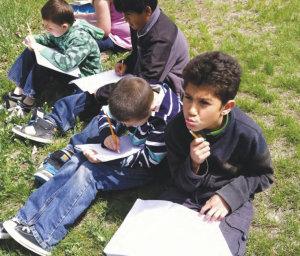Developing Character through Ancient Wisdom

Originally appears in the Spring 2014 issue
IN THE INDIGENOUS CULTURES of central and western Australia, Yurees are assigned to each person at significant passages in their lives. Yurees represent indigenous animals, plants, and places.1 Once assigned, the individual becomes responsible for the Yuree as well as its environment. As caretakers, they learn how their own well-being is inextricably linked with the well-being of their totemic species, as well as the overall well-being of the environment. Throughout their lifetimes, members of the Jarowair and Gorenpul cultures accumulate a number of different Yurees. As a result, knowledge of flora and fauna is widespread and members of indigenous communities consider themselves to be guardians of the environment.
Learning from nature is a form of ancient wisdom that has retained its importance through time. The basic concept of having a nature guide (any being that watches over or assists a person or group of people) can create an incentive for children to act as environmental stewards. By studying and adopting an inspirational guide from nature—be it a plant, animal, natural phenomenon, or geological feature— students will develop habits of respectful and responsible decision making. This article outlines a character education plan, with adaptable activities for K-12 learners. The core plan can be tailored to enhance grade-specific and discipline-specific objectives. The lessons integrate science, visual arts, language arts, and humanities.
Discovering Your Nature Guide
Begin with an outdoor field trip to nurture your students’ connection with the natural world. Before embarking on the trip, take time to activate prior knowledge, excitement, and curiosity using poems and other materials. Provide time for students to brainstorm what inspires them in nature. Encourage students to think creatively–their inspirations don’t have to come from living animals. A mountain or rainbow can also speak to them.
If funds permit, bring students to a nature center, a state or national park, national forest, a local green space, or even a farm. If funds are limited, take students on a neighborhood walk, go to the local park, or simply find a quiet spot on your school campus. Inspiration can be found in many places. Students should bring a field notebook and pencils. The teacher should bring extra pencils, pencil sharpeners, and erasers. If possible, bring cameras along to document the walk.
To view the photo-rich magazine version, click here.
If you are not already a subscriber, please subscribe to read the full article
Cheri Isgreen is a curriculum writer and Education Specialist for Your True Nature in western Colorado. Passionate about classical horsemanship, her family has two horses and three cats. She can be reached via www.yourtruenature.com.
Leave a Reply
You must be logged in to post a comment.





